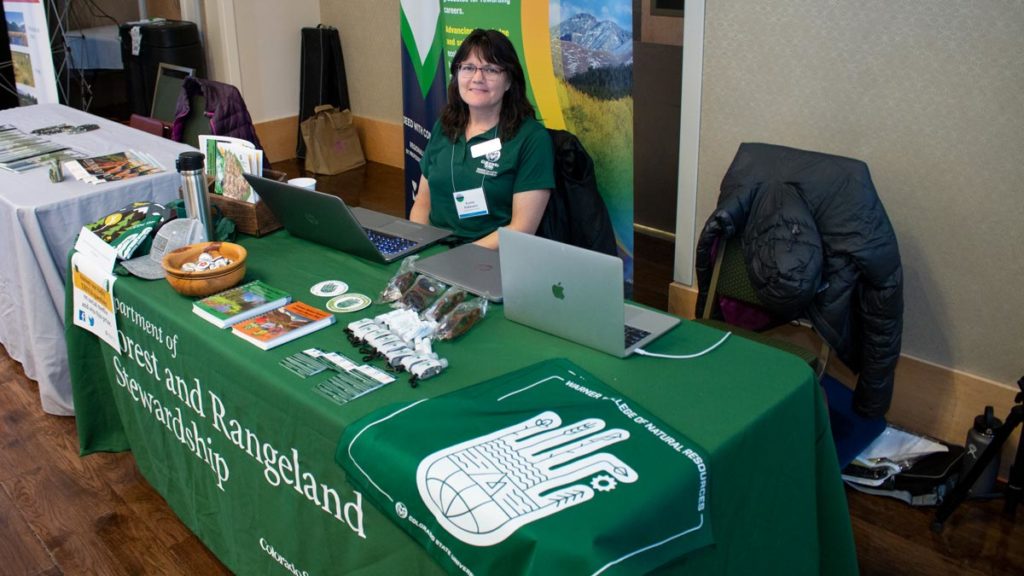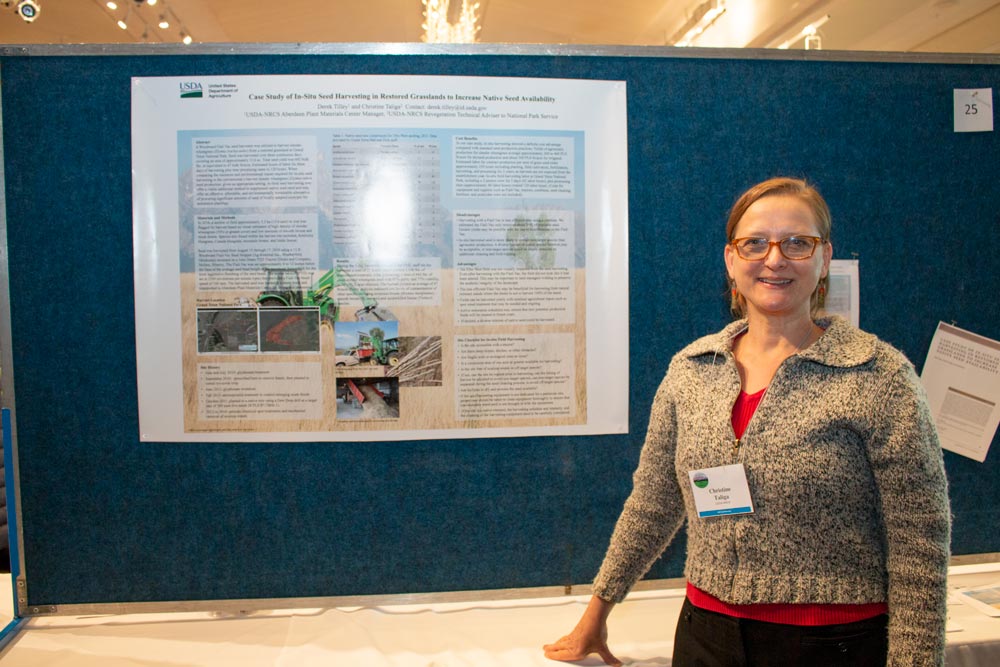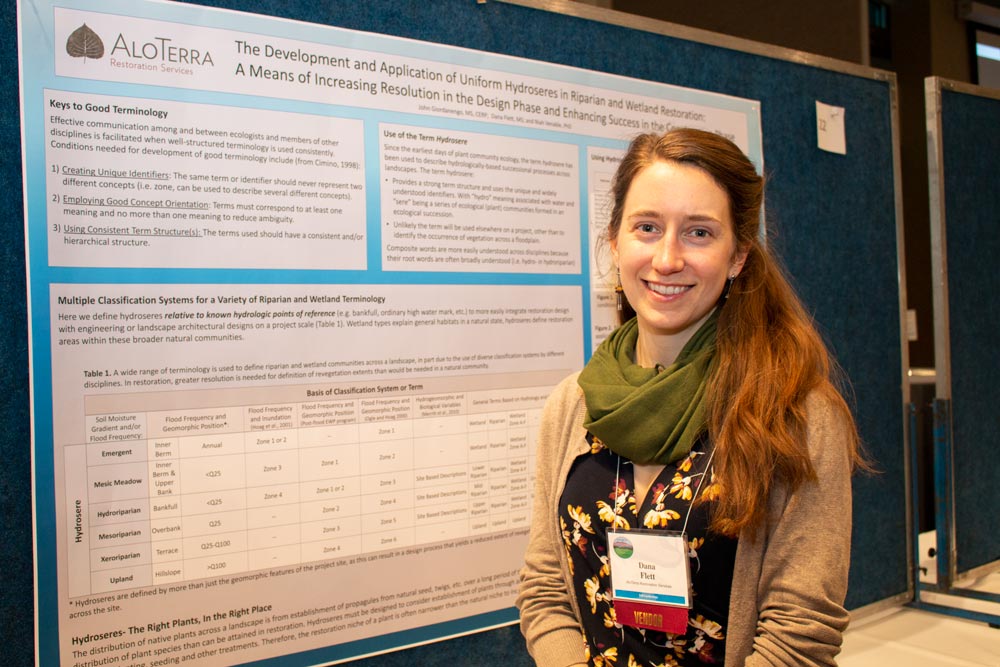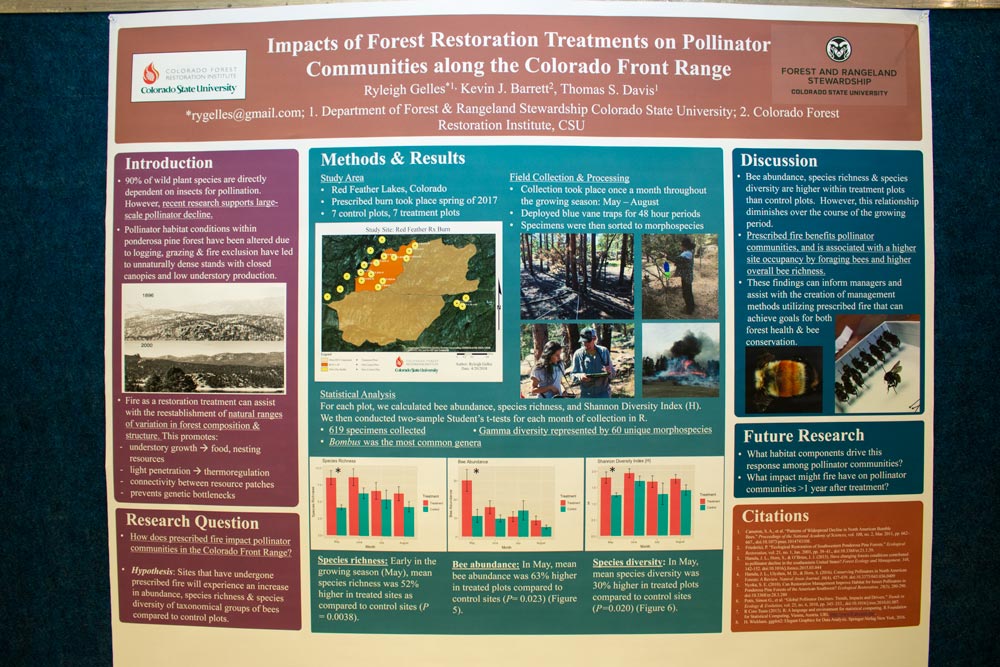
Working in the high altitudes of the Rocky Mountains requires working in and through inclement weather conditions, even at an indoor event.
Organizers and attendees of the High-Altitude Revegetation – Society for Ecological Restoration (HAR-SER) Rocky Mountain Conference at Colorado State University had to do just that during the strange mid-March winter blizzard that hit the state’s Front Range. This regional chapter of the national SER organization brought restoration stewards together to share and discuss their work in the field of restoration ecology.
Despite a one-day university closure, the biennial conference proceeded smoothly thanks to a number of CSU faculty members, students and alumni involved in organizing and running the event. These conference organizers worked with Lory Student Center staff to create space for concurrent sessions held the next day.
“Participation from CSU employees and alumni shows how important CSU is as a regional contributor to the field of restoration ecology,” said Mark Paschke, HAR-SER president and CSU professor. “Our colleagues at the University of Wyoming, University of Colorado Denver and other institutions were also crucial in the conference’s success.”
These collective efforts ensured over 60 local and regional presenters and 200 attendees could maximize their conference experience. All the conference sessions were held which allowed attendees to share and receive knowledge and experience about new restoration ecology and management topics.


The field of ecological restoration has matured since the Conference was first held in 1974. Lessons learned from the restoration of mining disturbances have increasingly been applied to other disciplines. This year’s conference sessions included restoration topics for wildland fire, climate change, forest management, wildlife habitat, and wetland and flood recovery.
Jesse Wooten, a graduate student in the Master of Natural Resource Stewardship program, said he enjoyed the diversity of perspectives from different disciplines.
“Some of the presentations were so compelling that I am considering adjusting my course schedule in future semesters in order to learn more about certain aspects of restoration,” he said. “It opened up some ideas for research I would be interested in conducting in the future.”
Forest and Rangeland Stewardship senior Ryleigh Gelles combined a few of these topics in her own research for which she received a first-place poster presentation award. Her project looks at the impacts of forest restoration treatments on pollinator communities along the Colorado Front Range. As an undergraduate student she was surprised and pleased to be recognized by professionals in this field.
“I’m honored to be recognized by such a prestigious organization, especially one consisting of a lot of researchers I’ve worked with who have inspired me and who I’ve come to admire greatly,” Gelles said. “It’s been rewarding learning more about the field I’m interested in and gain new perspectives to consider in future projects.”

Paschke agrees there is great potential and current recognition for the field he’s helped to build during his own career. The United Nations recently declared a global aim to scale up its support for the restoration of degraded and destroyed ecosystems to lessen climate change effects and increase food security, water supply and biodiversity.
“This illustrates the central role that ecological restoration must play in the management and maintenance of the planet’s natural resources,” Paschke explained. “We have great challenges in front of us, but we are building a foundation of expertise in ecological restoration that provides some optimism for the future.”
The group of restoration students, scientists and professionals at the HAR-SER Conference are doing their part to improve damaged areas within this Rocky Mountain corner of the world. Their perseverance demonstrates that these stewards can successfully overcome less than ideal conditions they typically have to work with.